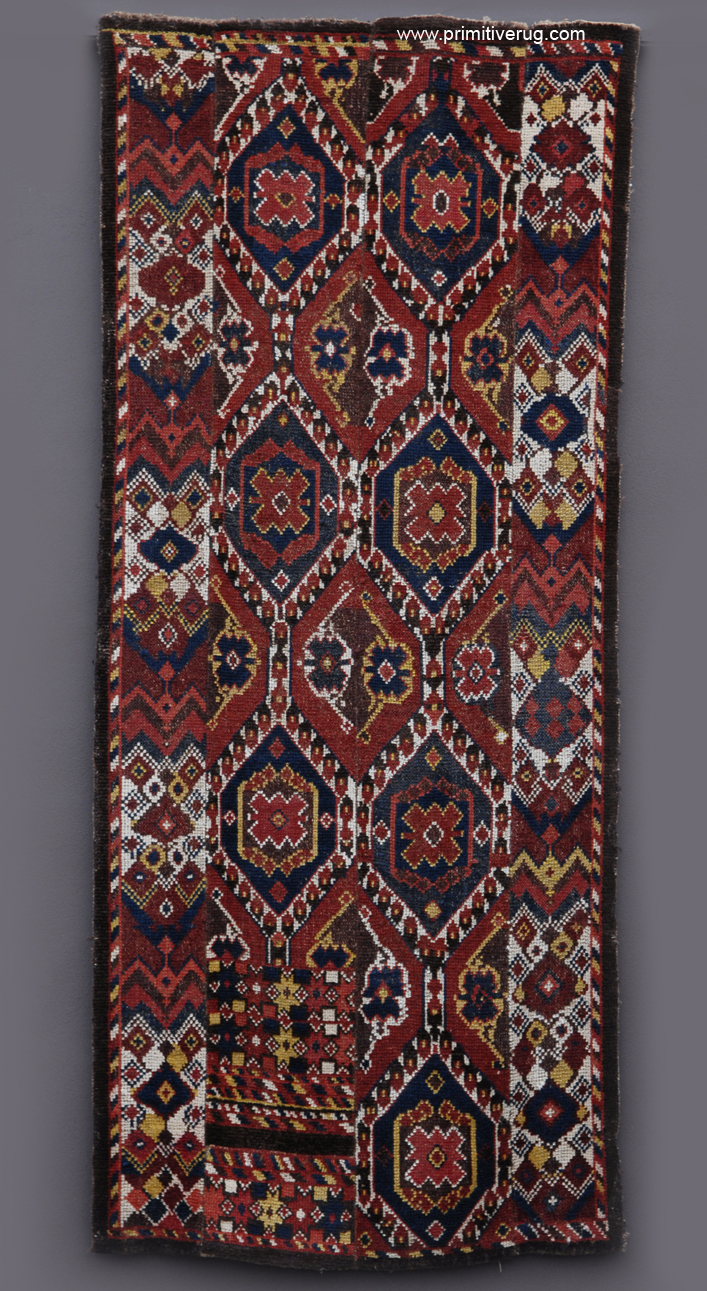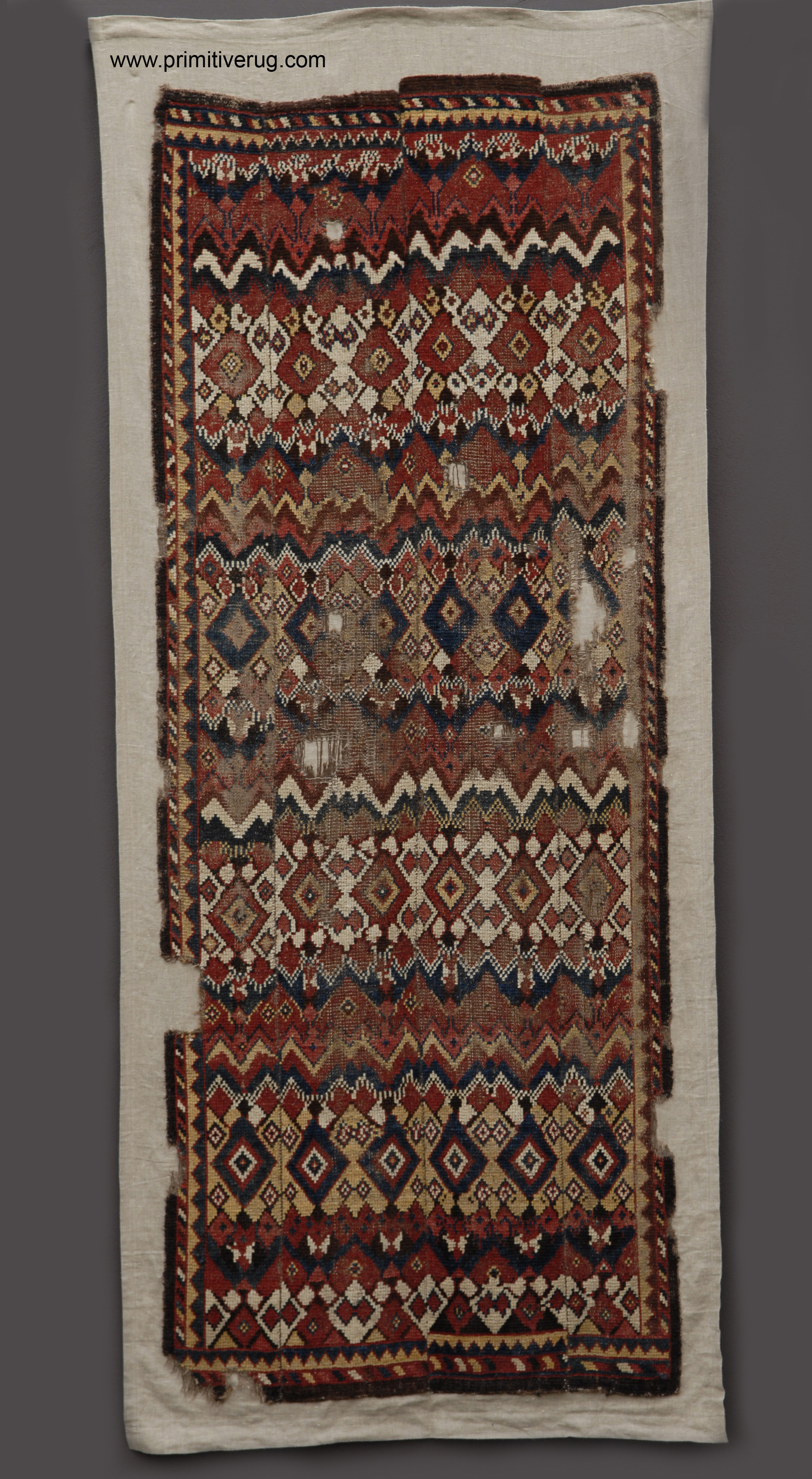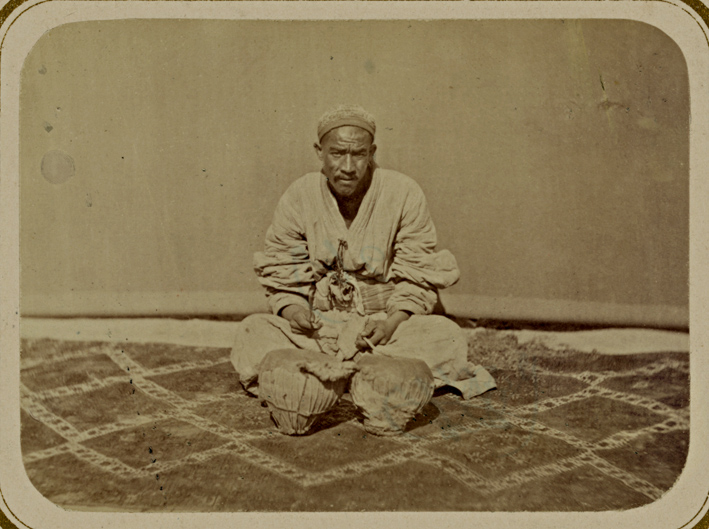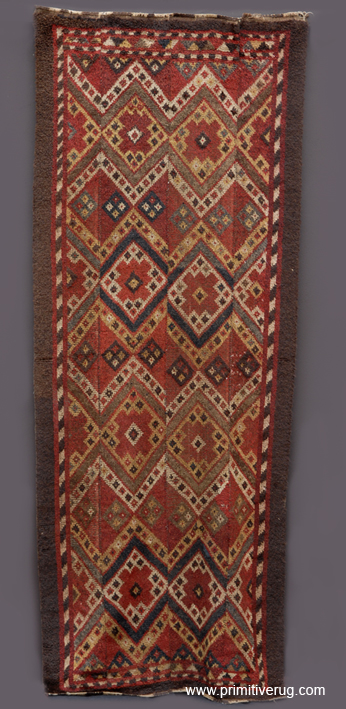Bearskin Rugs of Central Asia
Robert Cobcroft
Bearskins of Central Asia
You just want to roll in one, so immediate is the thrill ¹
Long piled shaggy bearskins of Central Asia are referenced by many variations of the word Julkhirs. What is a bearskin rug? Bearskins were woven by Central Asian nomads in Uzbekistan, Afghanistan and Tajikastan - Amu Darya, the Oxus. Uzbeks, Arabs, Kirghiz and Turkmen Uzbeks were the principal weavers of the shaggy pelt like rugs called Julkhirs. Other similar shaggy bearskins are found in Tibetan weavings – TsukTruk.
Stories abound about the origins of Central Asian Bearskins – the very name stirs the imagination – mountainous rugged terrain, cold windy mountain peaks, wild bears - their skins preserved and made into sleeping rugs – fiction. Some weavers of bearskins were hallucinating whilst weaving, their erratic weavings the result of long periods of hallucinogenic drug intake. 2
Primitive bearskins with their soft thick shaggy wool are a patterned facsimile of shaggy animals and an archaic link to a distant past. Extant examples give us a glimpse into this lost world of nomadic existence.
Julkhirs in Samarkand Uzbek, literally means Bearskin, in other locations called Pati Zulvarak or Julvarak. 3 Khirs in Nurata Uzbek means bear. 4 The meaning for the Turkmen Uzbeks of the Nurata Basin, Julkihrs was a saddle blanket of a rich man, jul - saddle blanket khirs - rich man. 5
Also interpreted as, skin of bear, djulchir, djul-y-khyr, djul-ykhir,julekhers, julkhyr (joorli-hur), Julhir, julykhir, jul-I-Khyr, julykhyrs, , julihorc, Culkhir, Joolkhir, Joolkhyr, Joolykhyr, Joolykhyrs, Cunkur, Julkyr, Jul-i-khirs
Call them want you want, if you are lucky enough to own one of these rare shaggy bearskin rugs you won’t care how it’s spelt or pronounced the joy they bring is immense.
Bearskins used to illustrate this post: Collection The Author
1 Cater, M. The Bearskins of Oxiana (Antiques and Art in Queensland 2005) 58
http://www.orientalcarpets.com.au/home/newsletters/essays.html
2 Tanghe, P. Wouters, H. Van Tongerloo, A. Pollet, L. Boenders, F. Beaulieux, D. Djulchir Tissus de defense et de protection (Kredietbank, Bruxelles, 1995) Illustration 27, 138
3 Moshkova, V. G. Carpets of the People of Central Asia (George O’Bannon, Arizona Lithographers Tucson, Arizona, 1996) 331
4 Moshkova, V. G. 333
5 Moshkova, V. G. 121




